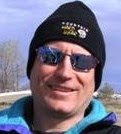Two weeks before the Alby flight…
I must have had sunstroke because after three days of playing with airplanes and gliders in record high temperatures of 108F I announce that I will fly Alby from Decatur to TSA. I, who only got her gliding licence last September and who had never flown more than 16 miles from her takeoff airport, now thinks that flying 65 miles for a first cross country, over twice that required for the Silver distance, makes perfectly good sense. When I get home, I email Dean Forney, one of the most knowledgeable glider pilots I know, and inform him of my decision. “Go for it”, he writes back. I email Francis, one of the officers of our club, and ask her to let Sergio know. She does, but politely asks me “isn’t it rather like jumping into the deep end after just learning to swim?” That strengthens my determination to do the trip. I always rise to a challenge. So it is all set; everyone is informed. But by Thursday, when the sunstroke is fading and the reality of the task ahead is sinking in, I realise I must have been very ill indeed.
 You may wonder what gave me the audacity to believe I am capable of such a distance with such little experience. Since buying a beautiful Russia (AC-4C) earlier this year I have wanted to fly cross country. I have been practicing all the exercises suggested by the experts. I have practiced flying small cross country triangles around Decatur. I have made many flights of over 2 hours and if other pilots can stay up, I usually can too. Through writing articles for my club newsletter I have spent much time considering landing out and cross country planning. I was beginning to feel ready for the club standard 35 mile jaunt up to Gainesville. Then along comes Alby.
You may wonder what gave me the audacity to believe I am capable of such a distance with such little experience. Since buying a beautiful Russia (AC-4C) earlier this year I have wanted to fly cross country. I have been practicing all the exercises suggested by the experts. I have practiced flying small cross country triangles around Decatur. I have made many flights of over 2 hours and if other pilots can stay up, I usually can too. Through writing articles for my club newsletter I have spent much time considering landing out and cross country planning. I was beginning to feel ready for the club standard 35 mile jaunt up to Gainesville. Then along comes Alby.One week before the Alby flight…
As Alby gets closer to Decatur, on the wings of Dean’s Libelle, I can see more clearly what I have volunteered for and I start to think I have made a really stupid decision. I email Sergio so no hopes will be built up. Two things I don’t tell him. Firstly, I will actually have to fly 85 miles around DFW’s class B airspace. Secondly, my small trip to an airport 16 miles away was actually at Moriarty on a day when other pilots were flying 500 km courses. His reply informs me many people will be following my flight. Secretly I pray for an internet meltdown.
One day before the Alby flight…
 I had originally intended to fly to TSA in very loose formation with my good friend and gliding guru, Steve Altman. But as I watch the weather forecasts, it looks like I will be able to make the flight the weekend after Alby arrives at Decatur. I know Steve will be working then, so hope I can delay the flight until the following weekend. I meet up with Dean on Friday afternoon. He gives me a serious look over his café au lait. “Well, Liz”, he says. “It looks like tomorrow will be the best gliding day of the year”. I know I can’t pass such a day up and will have to make the flight without Steve. It will be just me and Alby.
I had originally intended to fly to TSA in very loose formation with my good friend and gliding guru, Steve Altman. But as I watch the weather forecasts, it looks like I will be able to make the flight the weekend after Alby arrives at Decatur. I know Steve will be working then, so hope I can delay the flight until the following weekend. I meet up with Dean on Friday afternoon. He gives me a serious look over his café au lait. “Well, Liz”, he says. “It looks like tomorrow will be the best gliding day of the year”. I know I can’t pass such a day up and will have to make the flight without Steve. It will be just me and Alby.The Alby Flight...
The most important things I take with me into the cockpit are three pieces of advice:
1. If you don’t want to deal with an emergency, don’t create one – Jim Vickery (He actually tells a short story, but this is the moral of the tale.)
2. Get high, stay high – Dean Forney
3. Only worry about the waypoint behind you and the waypoint ahead of you – Steve Altman
Launch No. 1:
I had arranged with the tow pilot for a 12 noon tow and things are going pretty much on time. I plan on sampling the conditions before I leave. I am not going if the conditions are not as good as Dean has promised. After releasing at 2500 ft AGL into a clear blue sky I find a marginal thermal that keeps me from descending, but doesn’t offer me any decent lift. But feeling it might grow into something bigger, I decide to work it for a while. Unfortunately it is in the power aircraft traffic pattern and, for the first time ever since I have been flying at this normally very quiet airport, three training aircraft simultaneously arrive to practice touch and goes. Floating 500 ft over them makes me nervous and I move off hoping to find another thermal. Nothing. Neither lift nor sink and I gracefully float back to earth.
Launch No. 2:
Despite the still blue skies, and despite two other pilots launching and finding nothing I relight immediately. I release into a strong thermal. It takes me up to 3200 ft AGL and then breaks up. I lose it, try to find it again, give up, try to find another thermal, hit sink, head back to Decatur, hit strong lift on final, deploy full spoilers and still need a slip to get down. I land and look up. Cumulus clouds are beginning to develop. High ones, with dark concave bottoms and well defined development. I run my glider backwards up the runway to get relaunched.

Launch No. 3:
A little before 3 PM I release at 2400 ft AGL, this time into a whopping thermal that drives me up to 7000ft AGL. I know this is it. Just to be sure before leaving Decatur’s airspace, I fly towards a neighbouring cloud and again, find 4-6 kt lift. No question, this is it. I radio to my ground crew, a.k.a. husband, to switch to 123.5. This is the signal for him to start driving south.
My progress is slow going. Firstly the winds are from the southwest, with a 10 kt headwind component. Given that the best L/D of my Russia occurs at 50 kts, my ground speed is unimpressive to say the least. Secondly, I am following Dean’s advice and staying high. Cloud topped thermals are abundant and I am able to dolphin from one to the other, straying only slightly off course. Occasionally I stop to thermal in the strongest for the pure joy of rocketing upwards at 6-10 kts. (You have to understand, here, 2 kt thermals are normal; 4 kt thermals are considered a treat.) In this fashion I am able to stay above 6000 ft AGL…until I get to Parker County Airport, a third of the way on my route.
Then everything seems to stop – the road I have been following, landmarks, the abundance of clouds. A few scraggy, poorly developed cumuli break up the blue, but these are miles apart (25 miles at my guess), far too infrequent for the glide performance of my Russia. I stop in a thermal just south of Parker County and try to squeeze every last inch out of it. Given that the southerly wind is blowing me back up my track, I know this isn’t a great idea, but I need time to think. Was I about to create an emergency? At that point my crew asks for my position. After I answer, a second male voice comes over the radio.
“Are you the pilot bringing Alby to TSA?”
“Yes,” I reply. “If I make it.”
“I’m the next Alby pilot,” he says. “And you’ll be fine. You’ve got a few hours left.”
For the first time I look at my watch. 4:30 PM. I have paid no attention to the time until now and it is later than I would have liked. I can feel panic seeping into my bloodstream. There’s no way I can do this, I think. It’s too late. There’s no lift out there. I’m doomed. And the internet meltdown hadn’t happened. I start irrationally veering off to the west towards a deceptively good looking cloud. Panic is beginning to affect my thinking. I kick myself as best one can in a small cockpit. I read Steve’s words in my mind – one waypoint at a time. I look south. I can see the bend in the east-west road that curves around Bourland airport, 11 miles away. I am at 6000 ft AGL. I have two choices. I can land now and end this anguish. Or I can just head out to Bourland. I have enough altitude to make it there. I will either find lift or not and once I get to Bourland I can re-evaluate my position. So like a diver jumping into the water, I hold my breath and turn south.
There is little I can do other than fly along like a blind man with a cane and hope I will bump into another thermal. I can’t reach any of the clouds and the ground is uniformly brown and barren, offering few clues about thermal generation. After only 5 miles a small bubble allows me a few turns and I gain a 1000 ft, and so pass by Bourland at 6000 ft AGL. Things are still not too bad. My next waypoint is Embry, almost 20 miles away, although there are a couple of landout airfields enroute if I need them. I fly in smooth air for 10 miles and then finally stumble into a moderate thermal that bears me back up to 5500 ft AGL. I continue on, my vario alternating between crooning and lazy chirps. Three miles later I feel something good. I turn but sink like a rock. I have just been tricked out of 500 ft. I am down to 4000 ft AGL. With one of my landout airfields almost under me I continue southeast, expecting that I will soon have to turn back and land there. I give it a thorough checkout as I fly by. This is where it will all end. The slow descent is like a slow death. Part of me wants to land and get the inevitable over with.
Some gentle lift tickles my wings. My vario chirps with a little more enthusiasm. I slow to milk this for all I can get. Then suddenly…Bam! A giant bubble of air slams against the underside of my glider. My vario screams like a hyperactive canary. I throw the glider into a 50o bank, drop the nose a couple of degrees on the horizon and kick the rudder to quickly get my nose around. There is no way in hell I am losing this one. And bingo, I hit the bullseye and ride 6 kt lift like an express elevator through 4000 ft AGL…5000 ft…6000 t then…
Ding.
My GPS gives me an airspace alert. The southwest wind has blown me uncomfortably close to the Class B. I have no choice but to leave and pick up a heading that will keep me close to, but out of the airspace. And so I learn a new definition of pain – leaving the only thermal this side of DFW while it’s still bubbling like the brew in a witch’s cauldron.
With enough altitude to continue on, I start looking ahead for Luscombe, my next landout field. I see it and it looks like a comfortable glide. I check the distance on my GPS and I notice that TSA is now within gliding range. I pause. I am surprised. I had been so sure I would be landing out I had forgotten about TSA. But now it slowly dawns on me I might actually make it and a small flame of hope ignites in the back of my mind.
I turn east. If I hit sink, I can still make Luscombe, but I find neither lift nor sink. For 15 miles, nothing. Absolutely nothing. Luscombe becomes an unreachable dot on the horizon behind me. My GPS tells me TSA is only 4 miles away. In this featureless terrain, I still don’t see it. I am at 2200 ft AGL and I can’t see the place I’m hoping to land at. It is disconcerting. But the numbers tell me I will make it, and I have no choice but to believe them. Still, I am picking out suitable fields as I go. I see a long whitish building and I remember a long hanger on the airport diagram on their website. That must be it. I head straight for it.
 At a little after 6 PM I cross the centreline of the runway at 1600 ft AGL. I have little altitude to spare. I enter the traffic pattern and land. As I step out of the cockpit it occurs to me that if my life was a movie, at this point the orchestra would start up and I would give some teary speech about this being the best moment of my life. But, after hours of keeping my emotions under a tight rein so reason and common sense could prevail, I can only feel hunger and the need for the bathroom. We tow the Russia in. I wake up Alby who’s fallen asleep watching the barograph. After Terry Stroud lands, I pass Alby into his care for the next long and difficult leg of Alby’s voyage.
At a little after 6 PM I cross the centreline of the runway at 1600 ft AGL. I have little altitude to spare. I enter the traffic pattern and land. As I step out of the cockpit it occurs to me that if my life was a movie, at this point the orchestra would start up and I would give some teary speech about this being the best moment of my life. But, after hours of keeping my emotions under a tight rein so reason and common sense could prevail, I can only feel hunger and the need for the bathroom. We tow the Russia in. I wake up Alby who’s fallen asleep watching the barograph. After Terry Stroud lands, I pass Alby into his care for the next long and difficult leg of Alby’s voyage.The day after the Alby flight…
My excellent crew and I sleep late, then treat ourselves to a leisurely breakfast. I am still exhausted, but Glenn needs to get his gliding fix so we head out to the airport, arriving later than usual. We are assembling the Russia when Dean drives up.
“Hey Liz,” he calls. “Everyone is waiting for you in the hanger.”
As I walk in I am greeted by congratulations and well dones from my fellow club members. Jim presents me with a bunch of flowers. Dean shakes my hand.
“Well done, number 14,” he says.
“Thank you, number 13,” I reply. I can’t help smiling. To hell with reason and common sense. This feels good. This feels really good.
Elizabeth Maynard




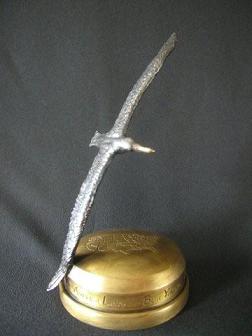
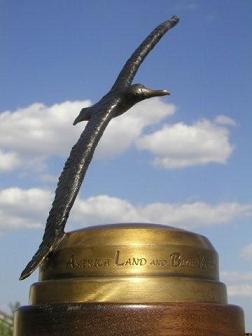


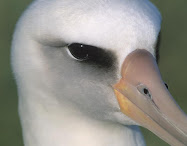
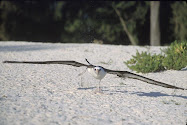


.jpg)
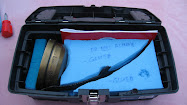.jpg)
.jpg)
.jpg)
.jpg)
.jpg)

.jpg)
.jpg)
.jpg)
.jpg)
.jpg)
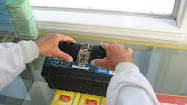.jpg)
.jpg)

.jpg)




